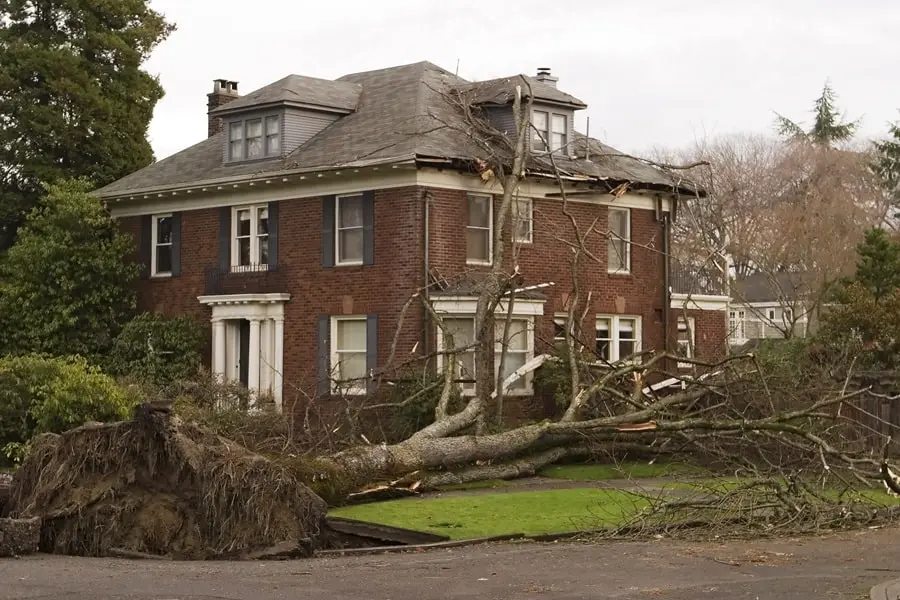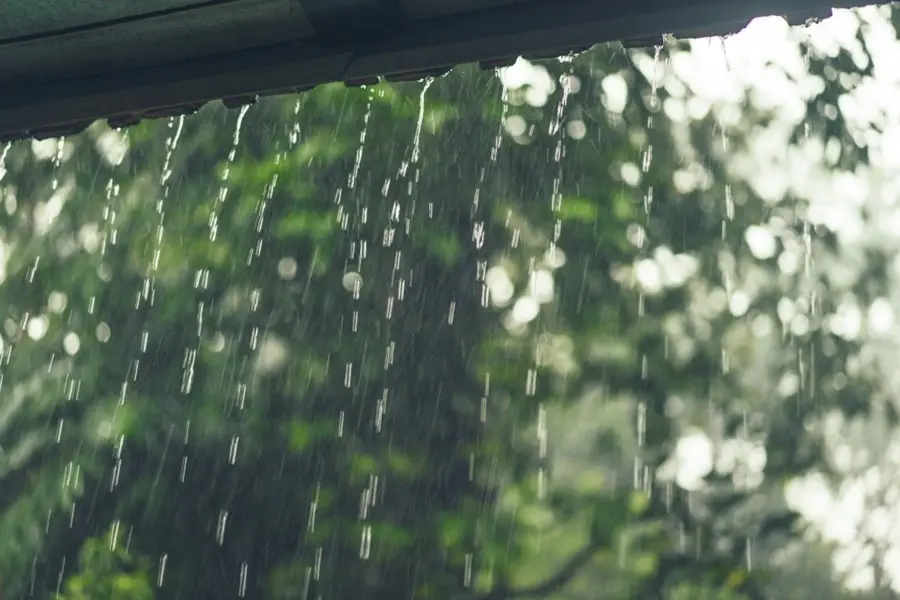Will Insurance Replace My Roof After a Storm in Florida?
Not sure if your roof qualifies for insurance replacement? Learn how Florida’s 25% rule and storm damage claims really work...

Yes — Florida home insurance will often cover roof replacement after a storm if the damage is caused by a covered peril such as wind, hail, or falling debris. However, approval depends on your insurance policy, roof age, and Florida’s roofing regulations. To qualify, the damage must result from a natural disaster — not normal wear and tear — and the claim must be filed within your policy’s deadline. Older roofs, cosmetic issues, or missing documentation can lead to reduced payment or denial.
At Affordable Roofing Systems, we specialize in storm damage roof restoration. Our Tampa roofing team provides free inspections, insurance-ready estimates, and expert guidance to help you get the coverage you deserve. This blog explains what qualifies for roof replacement under insurance and how to take the next steps.
What Type of Storm Damage Is Covered by Insurance?
Covered Perils in Florida Policies
Most Florida homeowners insurance policies cover storm damage caused by severe weather events like wind, hail, falling debris, and hurricanes. These are considered “covered perils” because they’re sudden and accidental.
However, coverage usually excludes issues related to wear and tear, lack of maintenance, or pre-existing conditions. If your roof was already deteriorating before the storm, your claim could be denied or only partially paid. It’s also important to note that flooding is not covered under standard homeowners policies, you’ll need separate flood insurance for that type of damage.
What Roof Damage Triggers a Claim?
To file a valid claim, there must be clear signs of storm-related damage. This often includes:
- Missing or lifted shingles
- Soft spots or sagging roof decking
- Ceiling or wall leaks
- Cracked or broken flashing
If you notice any of these issues after a storm, it’s important to act quickly. The longer you wait, the more likely the damage will worsen and the harder it may be to prove the storm was the cause.
Learn the Signs of Roof Damage Homeowners Shouldn’t Ignore in our guide.

Will Insurance Cover a Full Roof Replacement?
Home insurance doesn’t always cover a full roof replacement after a storm. It depends on your policy, the extent of the damage, and Florida’s building codes. Many homeowners assume storm damage guarantees a new roof, but insurers look closely at what’s actually covered.
ACV vs. RCV – What Your Insurance Policy Actually Pays For
Your policy likely falls into one of two categories:
- ACV (Actual Cash Value): Pays the depreciated value of your roof. That means age, condition, and materials are factored in, and your reimbursement will be lower.
- RCV (Replacement Cost Value): Pays the full replacement cost, minus your deductible, after repairs are completed and documented.
Coverage gaps are common, especially with older roofs or limited policies. Always review your coverage type before filing a claim.
Example: ACV vs. RCV Roof Insurance Payout
Let’s say your original roof cost was $20,000 and it’s now 10 years old.
| Item | ACV (Actual Cash Value) | RCV (Replacement Cost Value) |
| Original Roof Cost | $20,000 | $20,000 |
| Depreciated Value (50%) | $10,000 | N/A |
| Deductible | $2,000 | $2,000 |
| Initial Payout | $8,000 | $10,000 (ACV upfront) |
| Final Payout (after repairs) | N/A | +$8,000 (depreciation holdback) |
| Total Reimbursement | $8,000 | $18,000 |
- ACV Policy: You get $8,000 upfront and cover the rest out of pocket.
- RCV Policy: You get $10,000 upfront and another $8,000 once the work is done and documented.
Florida’s 25% Roof Rule – Still Apply After a Storm?
Florida’s old rule required full roof replacement if more than 25% was damaged. But a 2022 law (SB 4-D) changed that:
- Roofs built after March 1, 2009 and compliant with the 2007 Florida Building Code may qualify for partial repairs.
- Older or non-compliant roofs may still fall under the original 25% replacement rule.
These changes make it critical to work with a roofer who understands current Florida building code when pursuing a storm damage roof claim.
Learn more about How to File a Roof Insurance Claim After Storm Damage in Florida in our guide.
What Affects Whether Insurance Will Pay?
Roof Age and Condition
Older roofs often face reduced coverage or outright denial, especially under ACV policies.
- Roofs over 15–20 years old may receive lower payouts due to depreciation.
- Some insurers deny claims for aging roofs without proof of regular maintenance.
- Specialty materials like tile or discontinued shingles may require a full replacement if no matching materials are available.
Keeping maintenance records can strengthen your claim.
Matching, Code Upgrades & Ordinance Coverage
Florida law may require full roof replacement if matching materials aren’t available but only if your policy supports it.
- Matching laws: If suitable materials can’t be found, insurers may have to replace the entire roof.
- Code upgrades: Repairs required to meet current building codes may only be covered if your policy includes “ordinance or law” coverage.
Check your policy before storm season as these coverages can make a big difference when filing for storm damage roof restoration.

What to Do After Storm Damage
Act fast. Florida insurance policies often have tight deadlines and delays can lead to denied claims. Here’s what to do right away:
Step 1 – Document the Damage Immediately
As soon as it’s safe, take clear, time-stamped photos of your property, including:
- Missing shingles or debris on the roof
- Water damage like stains on ceilings or attic spaces
- Damaged gutters, flashing, or siding
- Fallen branches or impact debris
Include before/after photos if available, and save receipts for temporary repairs as these help support your claim.
Step 2 – Schedule a Roof Inspection
Insurance companies require an official roof inspection from a Florida-licensed contractor. A professional can spot hidden issues and document everything properly.
Affordable Roofing Systems offers free roofing quote in Tampa, and our experts are trained to document storm damage thoroughly to support your insurance claim.
Step 3 – File Your Insurance Claim Promptly
Florida law gives you one year from the storm date but don’t wait. Insurers prefer fast reporting.
Submit:
- Photo documentation
- Temporary repair receipts
- A written storm description
You’ll then coordinate with your roofer and adjuster to complete the restoration.
What If Insurance Won’t Replace Your Roof?
Not all claims lead to full roof replacements. Some are denied or underpaid but you still have options.
Common Reasons Claims Are Denied or Underpaid
- Roof is 15–20+ years old
- Poor maintenance or existing wear
- Inadequate damage documentation
- Missing policy endorsements (e.g., code upgrades)
- Damage labeled as cosmetic or minor
Careful documentation and working with a licensed contractor can often help you avoid or overcome these issues.
What to Do Next
If your claim is denied or underpaid:
- Request a reinspection – especially if your contractor finds more damage
- Submit a contractor supplement – a detailed repair estimate may help
- Hire a public adjuster – they advocate for you with the insurer
- Consult a legal expert – for complex or disputed claims
Learn more about Emergency Roof Repair After a Storm in our guide.

Frequently Asked Questions
Will insurance replace the roof after a storm?
Yes—if the damage is caused by a covered peril and exceeds your policy’s replacement threshold.
In Florida, most homeowners insurance policies cover sudden damage caused by a natural disaster, such as a hurricane, hail storm, or tornado. If the damage is substantial—especially if it affects more than 25% of the roof or violates local building codes—your insurer may authorize a full replacement, particularly under a Replacement Cost Value (RCV) policy.
Does insurance cover a 20+ year-old roof?
Not always—older roofs often have reduced or denied coverage.
Many Florida insurance providers now limit or exclude coverage for roofs over 15 to 20 years old, especially under Actual Cash Value (ACV) policies. The insurer may reduce your payout due to depreciation, or require proof of maintenance and roof condition to consider coverage at all.
How much does insurance pay for roof replacement?
It depends on your coverage type—ACV vs. RCV—and your policy limits.
An ACV policy pays only the depreciated value of your roof, while an RCV policy covers the full replacement cost (minus your deductible). Your final payout also depends on the extent of the damage, deductible amounts, and whether your policy includes code upgrade or matching coverage.
What if my claim is denied?
You can appeal, request a reinspection, or hire a public adjuster.
If your roof insurance claim is denied or underpaid, ask your insurer for a written explanation. You have the right to submit additional documentation, request a reinspection, or bring in a public adjuster to advocate on your behalf. If necessary, you can also file a complaint with Florida’s Department of Financial Services.
Do I need a licensed contractor?
Yes—Florida law requires a licensed roofing contractor for insurance claim approval.
Using a licensed Florida roofer is essential for code-compliant repairs and valid insurance estimates. Most insurance companies will not process roof replacement claims unless the work is performed by a certified contractor with proof of licensure and permitting.
Ready to File Your Roof Claim?
Storm damage doesn’t always mean a full roof replacement, but with the right insurance policy, timely documentation, and an experienced contractor, it’s possible. What your policy covers — ACV or RCV — and how your roof holds up to Florida’s building codes all play a role.
Affordable Roofing Systems is here to make the process easier. We provide free roof inspections, help with insurance paperwork, and deliver GAF-certified repairs that meet code and protect your home.
Contact our Tampa roofing specialists today.
9511 N Trask St Ste A, Tampa, FL 33624 | Get Directions
(813) 542-8462 | Get a Free Roofing Quote
